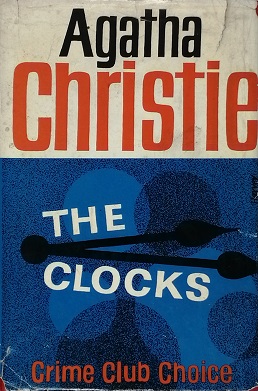When I reviewed Jenny Offill’s brilliant novel Dept. of Speculation earlier in the year, I asked for recommendations for other books told in fragments or vignettes. The comment section has lots of brilliant suggestions, but I don’t think anybody mentioned Paul Bailey’s Trespasses (1970). The fragmentary style may be in vogue now, but Bailey shows that some authors were doing it more than half a century ago.
Trespasses is mostly (by not entirely) told in short, sharp vignettes. They are often headed HER or HIM or THEM or BOY or BEFORE or AFTER – being, in turn, about Ralph, Ellie, them as a couple, Ralph as a child, and then before and after the big event. We learn what that is almost immediately: Ellie died by suicide. With chronology thrown out the window, the reader is flung instantly into a maelstrom of perspectives, events, and memories. Here’s a taste – this is the first page or so:
EARLY
It is May and the sun is shining. It is warm.
Early this morning, walking in the grounds, I stopped before an apple tree. I looked up at its branches, which seemed to droop under the weight of so much white and pink.
My head was empty; I could enjoy the blossom.
HER
She has been dead some weeks. Mrs Dinsdale complained – the state of her bathroom due to all that blood. People who disposed of themselves, she told me, were as inconsiderate as they were wicked. If wicked was putting it too strong, perhaps unnatural was nearer the mark. My wife had gone against nature.
PEACE
Endless green and blue: below and above. And one apple tree – white and pink, because it is always spring – darkening the earth, and fiercely light against the sky.
Some birds, occasionally singing, and a sun just strong enough to look into.
THEN
It was not a scream in the strict sense of the word. It was more like a howl.
We can’t rest in reflections on Ellie’s act, because of the constant jumps in time. Indeed, a funeral is mentioned in the opening pages – but we quickly realise it is Ralph’s father’s funeral, many years earlier. We are wrong-footed so often that you quickly give up trying to work out where you are, and instead take it all in like an abstract painting. What it conveys brilliantly is Ralph’s state of mind, after his wife’s suicide – unable to process anything properly, and disoriented to the point of mental collapse.
But considering how fragmentary, achronological and formally experimental Trespasses is, I was very impressed by how clearly the secondary characters come to life. Through a jigsaw of fleeting encounters, we get to know comic creations like landlady Mrs Dinsdale and her vicious relationship with her daughter, who would now probably be described as ‘sex positive’. Ellie and Ralph’s respective and contrasting upbringings speak a lot to their meeting across class barriers, and their mothers are fun and oddly poignant to spend time with.
I couldn’t decide if their gay friend Bernard was surprisingly progressive for a 1970 novel or not – he is a camp caricature of arch sayings, but nobody seems bothered about his sexuality. He speaks of his own actions with a mixture of shame and shamelessness, and he is one of two background characters given long, non-fragmented sections to narrative about themselves in the second half of the novel. Bailey keeps us on our toes, with this traditional approach to novel writing feeling fresh and even jarring, coming in the midst of the experimental.
The one thing we never get a grasp of (and I think this is a good narrative choice) is why Ellie made the decision to kill herself. When the novel came out, suicide had only been decriminalised in the England for nine years, and I’m sure it wasn’t considered with as much understanding as it is now. It is a bold topic for a novel, and Bailey writes it brilliantly. The experimentalism is never allowed to overshadow character, and Trespasses is first and foremost a book about character – often very amusingly, but there is something deeply moving about Ralph’s raking back and forth through his memories, for clues about what would happen.
I’ve read two Paul Bailey novels – his debut, At the Jerusalem, and now his second. I’ve been unintentionally reading them in order. I don’t see him much discussed now, though he is in fact still alive, but I’d love to hear from anyone else who admires and enjoys his work. And I’m glad the 1970 Club sent me back to my Bailey shelf. In my year of loving fragmentary novels, this is an excellent find.










